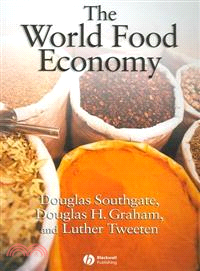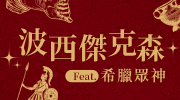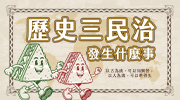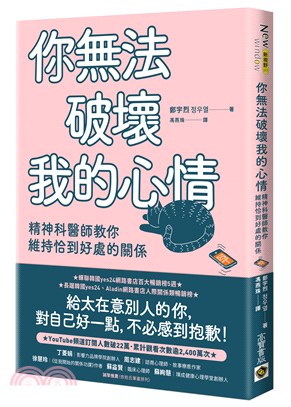The World Food Economy
商品資訊
ISBN13:9781405105972
出版社:John Wiley & Sons Inc
作者:Southgate
出版日:2006/10/12
裝訂/頁數:平裝/418頁
商品簡介
* Examines increases in agricultural output and productivity in both the developed and developing worlds
* Analyzes the centrality of agricultural development to general economic progress and explores cases where governments attempt to foster economic expansion while neglecting food production
* Assesses the challenge of satisfying food demand during the twenty-first century, given the effects of globalization on international trade and national legislation.
作者簡介
Douglas H. Graham is Professor Emeritus of Rural Finance in the Agricultural, Environmental, and Development Economics Department at Ohio State University.
Luther Tweeten is Emeritus Anderson Professor of Agricultural Marketing, Trade, and Policy in the Agriculture, Environmental, and Development Economics Department at Ohio State University. He is the author or co-author of over 500 journal articles and seven books, including Foundations of Farm Policy and Agricultural Trade: Principles and Policies.
目次
Acknowledgements.
Part I: Introduction.
1.1 Our Focus.
1.2 Chapter Outline.
Study Questions.
Part II: The Demand Side: How Population Growth and Higher Incomes Affect Food Consumption.
2.1 Classic Malthusianism, its Modern Variants, and its Critiques.
2.2 Demographic Transition.
2.3 Trends in Human Numbers, Past and Present.
2.4 Food Consumption and Income.
2.5 Demand Trends and Projections.
2.6 Summary and Conclusions.
Study Questions.
Appendix: The Fundamental Economics of Demand.
Part III: The Supply Side: Agricultural Production and its Determinants.
3.1 The Nature of Agriculture.
3.2 Increases in Agricultural Supply.
3.3 Has Intensification Run its Course?.
3.4 Trends in Per-Capita Consumption.
Study Questions.
Appendix: The Fundamental Economics of Supply.
Part IV: Aligning the Consumption and Production of Food over Time.
4.1 The Desirability of Competitive Equilibrium.
4.2 The Market Impacts of Commodity Programs.
4.3 Historical Trends in the Scarcity of Agricultural Products.
4.4 Outlook for the Twenty-First Century.
Study Questions.
Appendix: The Coordination of Decentralized Decision-Making.
Part V: Agriculture and the Environment.
5.1 Environmental Trade-Offs.
5.2 Market Failure.
5.3 Environmental Deterioration in the Absence of Agricultural Intensification.
5.4 Agricultural Development and the Environment.
Study Questions.
Part VI: Globalization and Agriculture.
6.1 The Theory of Comparative Advantage.
6.2 The Net Costs of Trade Distortions.
6.3 The Debate over Globalization.
6.4 Agricultural Trade: Recent Trends and the Current Debate.
6.5 Why Not More Trade?.
Study Questions.
Appendix: A Two-Country Illustration of Comparative Advantage.
Part VII: Agriculture and Economic Development.
7.1 Growth and Economic Structure.
7.2 Agriculture’s Role in Economic Development.
7.3 Trying to Develop at Agriculture’s Expense.
7.4 Agricultural Development for the Sake of Economic Growth and Diversification.
7.5 Summary and Conclusions.
Study Questions.
Part VIII: Striving for Food Security.
8.1 What is Food Security?.
8.2 Who and Where Are the Food-Insecure?.
8.3 Achieving Food Security.
8.4 The Food Security Synthesis and Economic Development.
8.5 The Standard Model, Communitarian Values, and Economic Equity.
Study Questions.
Part IX: A Synopsis of Regional Trends in the Global Food Economy.
9.1 Economic Growth and Income Distribution.
9.2 Population Dynamics.
9.3 Agriculture’s Response to Demand Growth.
9.4 Summary.
Study Questions.
Tables.
Part X : Affluent Nations.
10.1 Standards of Living.
10.2 Population Dynamics.
10.3 The Food Economy.
10.4 Dietary Change and Consumption Trends.
10.5 Summary.
Study Questions.
Tables.
Part XI: Asia.
11.1 Trends in GDP per Capita.
11.2 Population Dynamics.
11.3 Agricultural Development.
11.4 Dietary Change, Consumption Trends, and Food Security.
11.5 Summary.
Study Questions.
Tables.
Part XII: Latin America and the Caribbean.
12.1 Trends in GDP per Capita.
12.2 Population Dynamics.
12.3 Agricultural Development.
12.4 Dietary Change, Consumption Trends, and Food Security.
12.5 Summary.
Study Questions.
Tables.
Part XIII: Middle East and North Africa.
13.1 Trends in GDP per Capita.
13.2 Population Dynamics.
13.3 Agricultural Development.
13.4 Dietary Change, Consumption Trends, and Food Security.
13.5 Summary.
Study Questions.
Tables.
Part XIV: Eastern Europe and the Former Soviet Union.
14.1 Patterns of Economic Growth since the Fall of Communism.
14.2 Demographic Trends.
14.3 The Agricultural Sector.
14.4 Dietary Change, Consumption Trends, and Food Security.
14.5 Summary.
Study Questions.
Tables.
Part XV: Sub-Saharan Africa.
15.1 Trends in GDP per Capita.
15.2 Demographic Trends.
15.3 Agricultural Development.
15.4 Consumption Trends and Food Security.
15.5 Summary.
Study Questions.
Tables.
Part XVI: The Food Economy in the Twenty-First Century.
16.1 Victims of Our Own Success?.
16.2 The New Food Economy.
16.3 The Changing Role of Government.
Study Questions.
Abbreviations and Acronyms.
Map Annex.
References.
Index
主題書展
更多書展本週66折
您曾經瀏覽過的商品
購物須知
外文書商品之書封,為出版社提供之樣本。實際出貨商品,以出版社所提供之現有版本為主。部份書籍,因出版社供應狀況特殊,匯率將依實際狀況做調整。
無庫存之商品,在您完成訂單程序之後,將以空運的方式為你下單調貨。為了縮短等待的時間,建議您將外文書與其他商品分開下單,以獲得最快的取貨速度,平均調貨時間為1~2個月。
為了保護您的權益,「三民網路書店」提供會員七日商品鑑賞期(收到商品為起始日)。
若要辦理退貨,請在商品鑑賞期內寄回,且商品必須是全新狀態與完整包裝(商品、附件、發票、隨貨贈品等)否則恕不接受退貨。























